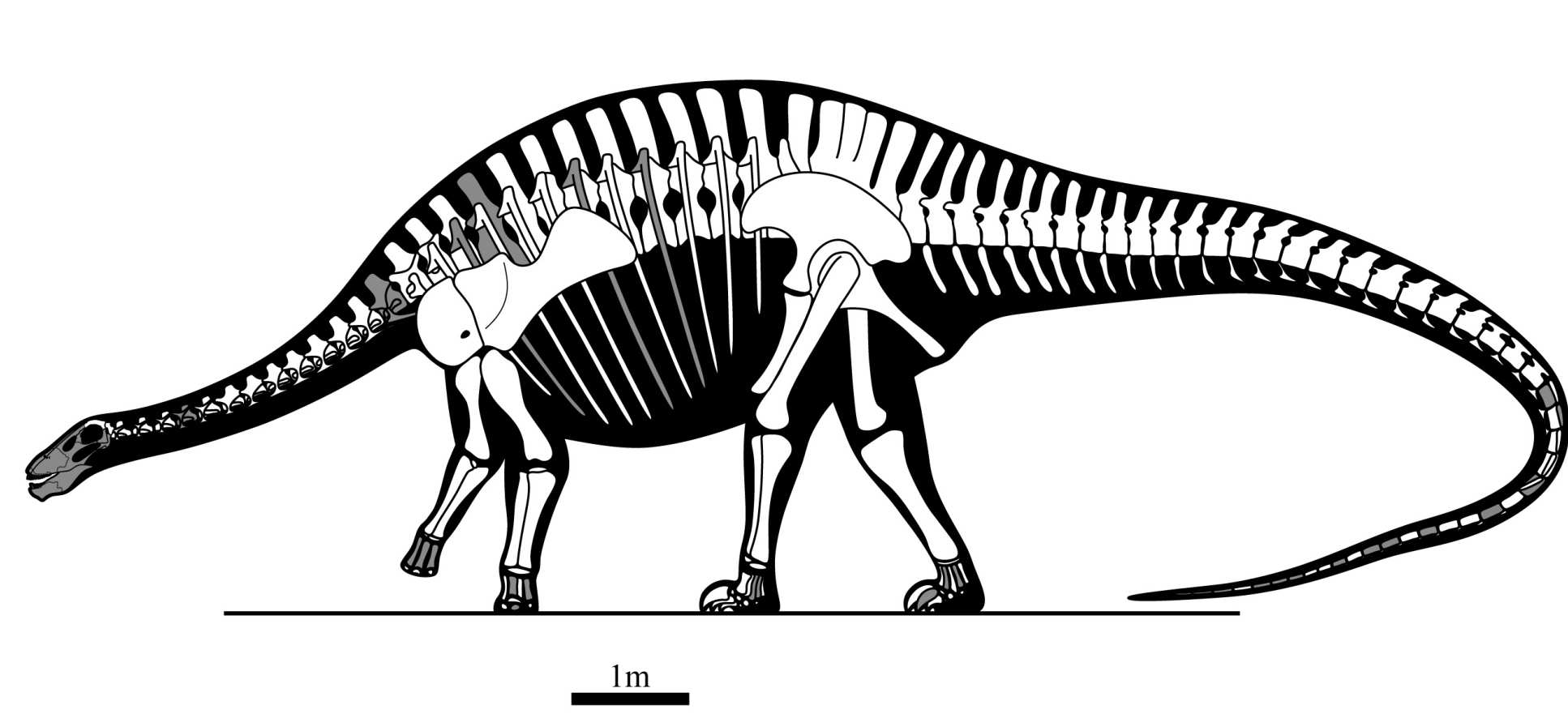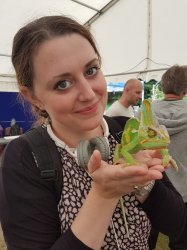
Artist’s rendering of Lingwulong shenqi

Researchers at Imperial, the Chinese Academy of Sciences, and UCL have found the world’s oldest neosauropod species.
The fossils – from a type of diplodocoid - could help us understand how dinosaurs and other animals evolved and dispersed through the ancient supercontinent Pangaea.
Scientists previously believed that diplodocoids and other types of sauropod were entirely absent from China, and that by the time diplodocoids evolved, eastern Asia had already split from the rest of Pangaea, around 160 million years ago. This split apparently isolated those animals that were already on the landmass, preventing the diplodocoids from getting there.
However, the newly found fossils are 15 million years older than any other diplodocoids previously found – and they could indicate that diplodocoids dispersed to eastern Asia long before it was separated from Pangaea.

The amazing dragon from Lingwu
Sauropods include some of the largest animals to have ever walked the earth, as well as more well-known sauropods such as Diplodocus and Apatosaurus. The new species of sauropod has been named Lingwulong shenqi - the 'amazing dragon from Lingwu’ – a city in northern China.
Not only is Lingwulong the oldest member (of this group), but it's the first ever from Asia. Dr Philip Mannion Department of Earth Science and Engineering
The researchers from the Chinese Academy of Sciences, Imperial College London, UCL, and London's Natural History Museum, uncovered the partial skulls, vertebrae, shoulders, and ribs of between seven and ten sauropods, ranging from young to adult. This was likely a family herd that perished during the beginning of the Middle Jurassic period (.174 million years ago).
From the remains they created a composite image of what the animal would have looked like in real life, revealing a short-necked sauropod. Although some sauropods reached lengths of 20 or 30 metres, this new species wasn't quite that big - but still measured 15 metres long.
The authors of the report, which is published in Nature Communications, said that the surprising findings might mean we’ll find fossils of other dinosaurs or animals that we wouldn't have expected to live in China 180 million years ago.
Co-author Dr Philip Mannion, from Imperial’s Department of Earth Science and Engineering, said the discovery was "doubly unexpected. Not only is Lingwulong the oldest member (of this group), but it's the first ever from Asia. Until now, we thought that neosauropods didn't get into Asia during the Jurassic.”
Lead author Professor Xu Xing, from the Chinese Academy of Sciences, Beijing, said: “It is very likely that there was a land bridge or something like that connecting eastern Asia to other continents.”

However, although Lingwulong opens up the possibility that this group originated in Asia, current knowledge suggests that the group dispersed to Asia from elsewhere. The authors therefore say more work needs to be done to find where Lingwulong's ancestors really came from.
The researchers continue to search sites in Lingwu and surrounding areas for more undiscovered dinosaurs and mammals, in order to piece together the true relationship between Pangaea and eastern Asia.
The research was funded by National Geographic research.
This story was adapted from a press release by the Chinese Academy of Sciences.
Image credits
Main image - Zhang Zongda
Image 2 - Xu Xing
Image 3 - Shi Aijuan
Image 4 - Xu Xing
“A new Middle Jurassic diplodocoid suggests an earlier dispersal and diversification of sauropod dinosaurs” by Xing Xu, Paul Upchurch, Philip D. Mannion, Paul M. Barrett, Omar R. Regalado-Fernandez, Jinyou Mo, Jinfu Ma & Hongan Liu, published 24 July 2018 in Nature Communications.
Article text (excluding photos or graphics) © Imperial College London.
Photos and graphics subject to third party copyright used with permission or © Imperial College London.
Reporter

Caroline Brogan
Communications Division

Contact details
Tel: +44 (0)20 7594 3415
Email: caroline.brogan@imperial.ac.uk
Show all stories by this author




Leave a comment
Your comment may be published, displaying your name as you provide it, unless you request otherwise. Your contact details will never be published.